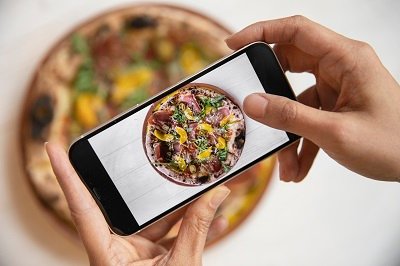In 2025, the competition in the food delivery market is fiercer than ever, but so are the opportunities. With the global online food delivery industry projected to surpass $500 billion in the coming years, entrepreneurs and restaurant owners are searching for smart, scalable, and cost-effective ways to enter or expand in this high-demand space. One solution is standing out above the rest: the white label food delivery app.
Let’s explore why launching a white label food delivery app might just be the smartest business move you make in 2025.
What Is a White Label Food Delivery App?
A white label food delivery app is a ready-made, customizable platform that allows businesses to brand and deploy their own delivery app without building it from scratch. These apps typically come with core features already developed—such as order tracking, real-time delivery updates, secure payments, and user-friendly interfaces—while allowing you to tailor the look, feel, and functionality to suit your brand.
You get the power of a professionally built product, minus the high cost and long development timeline of custom software.
Why the White Label Model Wins in 2025
1. Faster Time to Market
Speed is crucial in today’s market. Traditional app development can take 6–12 months (or more). In contrast, a white label food delivery app can often be deployed within a few weeks. In 2025, where market shifts happen quickly, being able to launch rapidly can be the difference between capturing and missing out on key customer segments.
2. Cost-Efficient Growth
Building an app from the ground up is expensive—developers, designers, testers, infrastructure, updates… the list goes on. White label solutions dramatically reduce those costs. You’re leveraging a proven, working system that can be branded as your own, giving you enterprise-grade functionality at a fraction of the cost.
Benefits of a White Label Food Delivery App
1. Scalability from Day One
Whether you’re launching in one city or planning a national expansion, white label platforms are designed to scale. Cloud-based infrastructure, multi-language support, and multi-restaurant capabilities make it easier to grow without major technical hurdles.
2. Focus on Your Core Business
With the technical heavy lifting handled, you can concentrate on marketing, customer service, and operations. You don’t need to worry about bugs, backend development, or server downtime—your white label partner handles all of that.
3. Custom Branding
Don’t want your app to look like a generic clone? No problem. White label platforms allow deep customization—from the color scheme and logo to specific features and workflows. This ensures your customers experience a seamless, on-brand interaction every time.
4. Built-In Analytics
Many white label solutions come with integrated dashboards, giving you real-time insights into order volume, delivery times, user engagement, and more. In 2025, data-driven decisions are non-negotiable, and these tools help you optimize performance without needing a data science team.
Who Should Use a White Label Food Delivery App?
- Restaurants & Cloud Kitchens: Easily launch your own branded delivery system and avoid high third-party commission fees.
- Entrepreneurs & Startups: Test new markets and business models with minimal upfront investment.
- Grocery & Retail Chains: Expand into hyperlocal delivery using proven, customizable tech.
- Food Delivery Aggregators: Quickly build and scale multi-restaurant platforms across cities.
Must-Have Features in 2025
To succeed in today’s competitive landscape, your white label food delivery app must offer more than just the basics. Look for these features in your chosen solution:
- AI-powered recommendations & personalization
- Real-time delivery tracking
- Multiple payment gateways
- In-app promotions & discounts
- Loyalty programs
- Cross-platform compatibility (iOS, Android, web)
- Seamless integrations (POS, CRM, ERP)
In 2025, consumers expect frictionless digital experiences. A leading white label solution delivers that out-of-the-box.
The Future Is White Label
Consumer behavior continues to shift towards digital convenience. Whether it’s meals, groceries, or pharmacy items—people expect on-demand delivery. And this trend shows no sign of slowing down.
White label food delivery apps enable businesses to ride this wave with lower risk and higher agility. Rather than investing months in custom development, they can launch quickly, scale flexibly, and compete effectively with market giants like Zomato, Uber Eats, and DoorDash.
Choosing the Right White Label Partner
Not all white label solutions are created equal. When choosing a provider, look for:
- Proven track record in food delivery platforms
- Customizable design & functionality
- Reliable support & regular updates
- Transparent pricing (no hidden fees)
- Strong security & data protection standards
Think of your provider as a strategic partner. Their technology will shape your customer experience—so choose wisely.
Final Thoughts
If you’re planning to break into the food delivery industry or upgrade your current delivery system, investing in a white label food delivery app could be the most strategic move you make in 2025. It offers the perfect blend of affordability, speed, scalability, and professionalism—helping you stay competitive while maximizing ROI.
In an age where speed and experience rule the market, white label isn’t just a shortcut—it’s a smart, sustainable path to growth.


